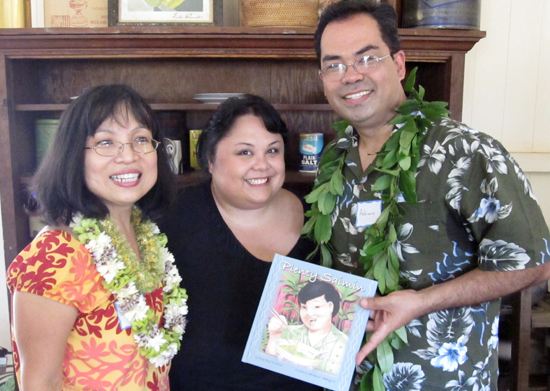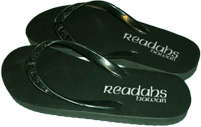
Feng Feng Hutchins (author) and Adriano Abatayo (illustrator)
Here’s our interview with local author Feng Feng Hutchins following our review of her new keiki book Plenty Saimin. If you missed the review you can still read it here. Many thanks to Feng Feng for answering some of questions. She graciously gives advice for the best places to get saimin, and the importance of multicultural books.
There’s a saimin recipe at the back of the book, is this the recipe you use for making saimin at home?
Sometimes, I use the saimin recipe at home. My kids have sensitive tastebuds so I often make minor changes, like less soy sauce or no pepper and ginger. They hate vegetables so I leave the cabbage and green onions out! Often, I surprise them with tempura shrimps. If I don’t have char-siu, I use spam.
Where do you go when you want to eat ono saimin?
I am a Zippy’s fan since there’s always one nearby and something for everyone in the family. Sometimes, I buy takeout at Shiro’s (Waimalu Shopping Center). I am not a picky eater, so when I am really hungry, saimin at McDonalds can be ono, too.
What did you enjoy most about working on this book?
The most enjoyable part in writing this book was that it allowed me to travel back in time, back to my childhood. At first, I felt sad ‘cos we never had big parties or friends over for birthdays. I would watch Mom make long life noodles and couldn’t wait for dinner. I remember the birthday person gets a drumstick and two eggs. As it turned out, this memory inspired me to write Plenty Saimin where I get to invite everyone I ran into, like Ah Kee did.
It was a great journey working with my publisher Kerry Germain of Island Paradise Publishing who believed in Plenty Saimin while others didn’t.
Are you working on anything right now?
I am currently working on an additional one-act to go with my winning play for a reading in Nov. The Ghost Wedding was recently awarded the Resident Prize of the 2009 playwriting contest of the Kumu Kahua Theatre/UH Manoa Theatre and Dance Dept. I am also writing a collection of children’s stories for a Malaysian publisher. Now that Hawaii keiki have tasted Plenty Saimin, I plan to surprise them with another book soon.
In your opinion, how important is it and what are the benefits of having children’s books that are multicultural?
As a kid in Malaysia, my parents only bought textbooks for us. When we want to read for fun, we would check out books from the public library in town. I remembered all the children books were written by haoles. I seldom see local authors or kids like me in stories. So growing up was tough without books to show me how to cope with social situations and issues.
It’s important for children to read stories they can see themselves in so they can get a better understanding of who they are. By showing different cultural groups of Hawaii, children learn to respect others, solve problems and overcome obstacles. In other words, they can see themselves as heroes and heroines in the world around them.
You’ve had stories published in Bamboo Ridge and other journals, how was the writing and publishing process different for ‘Plenty Saimin’?
Writing short stories about Malaysia was my way of coping and adjusting to a new life in America. Unlike Plenty Saimin, they dealt with poverty, abuse and injustice in a society where men are dominant. In a way, it gave me a “voice” which I didn’t think I had and taught me how stories should be told. It was definitely good practice!
Once a short story is accepted, it’s usually a matter of months to see it on a book format. As for picture books, they need illustrations so it takes a much longer time.
What is your best advice for authors aspiring to write cultural children’s books?
I won’t tell them to read, read, read children’s books because they’re already doing that. So, write from your own experiences or guts (or heart). When a publisher reads your story and can’t get it out of their head, then you will get a “yes” call in the morning! Good luck and don’t give up!




